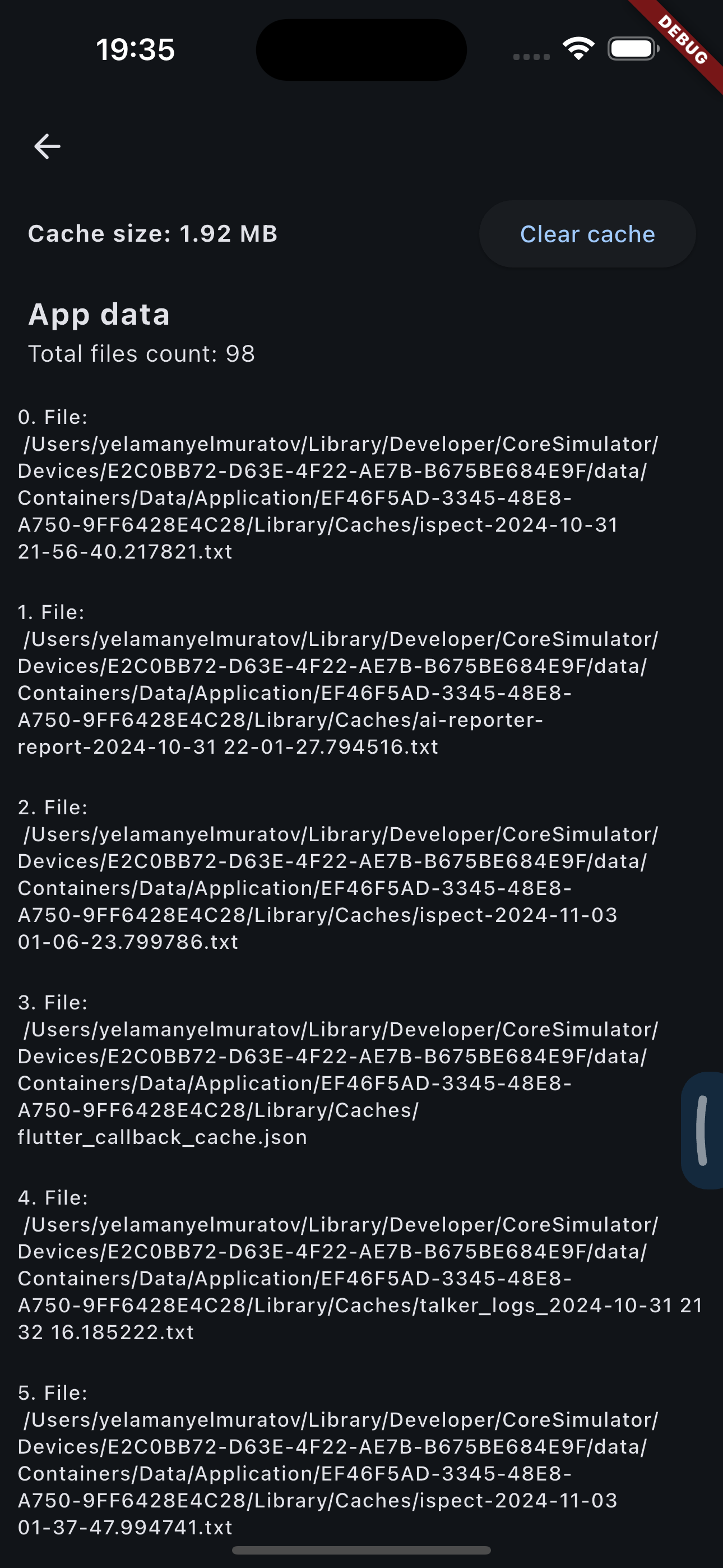ispect_device 4.1.1  ispect_device: ^4.1.1 copied to clipboard
ispect_device: ^4.1.1 copied to clipboard
An additional package for ISpect to retrieve platform information
A Handy Toolkit for Mobile App Debugging 🚀
ISpect is a simple yet versatile library inspired by web inspectors, tailored for mobile application development.
An additional package for using tools to view platform & device info.
Show some ❤️ and star the repo to support the project!
Packages #
ISpect can be extended using other parts of this package
| Package | Version | Description |
|---|---|---|
| ispect |  |
Main package of ISpect |
| ispect_jira |  |
An add-on package to use the Jira Atlassian Api to create issue tickets immediately via Feedback |
| ispect_device |  |
An additional package for using tools to view platform & device info. |
| ispectify |  |
An additional package for logging and handling. Based on Talker. |
| ispectify_bloc |  |
An additional package for logging and handling BLoC. |
| ispectify_dio |  |
An additional package for logging and handling Dio. |
| ispectify_http |  |
An additional package for logging and handling http. |
📌 Features #
- ✅ Draggable panel for route to ISpect page and manage Inspector tools You can also use it separately: https://pub.dev/packages/draggable_panel
- ✅ Localizations: kk, en, zh, ru, es, fr, de, pt, ar, ko, ja, hi. (I will add more translations in the future.)
- ✅
ISpectifylogger (inspired onTalker) implementation: BLoC, Dio, http, Routing, Provider - ✅ You can customize more options during initialization of ISpect like BLoC, Dispatcher error and etc.
- ✅ Updated ISpect page: added more options.
- Detailed
HTTPlogs:request,response,error - Debug tools
- Cache manager
- Device and app info (ispect_device)
- Detailed
- ✅ Feedback builder from pub.dev/feedback
- ✅ Performance tracker
📜 Showcase #







Easy to use #
Simple example of use ISpect
You can manage ISpect using ISpect.read(context).
Put this code in your project at an screen and learn how it works. 😊
Instructions for use: #
- Wrap
runAppwithISpect.runmethod and passISpectifyinstance to it. - In
actionItemsinsideISpectOptionsadd the corresponding Action buttons. For example:
ISpectifyActionItem(
onTap: (_) async {
await Navigator.push(
context,
MaterialPageRoute<dynamic>(
builder: (_) => AppInfoScreen(
iSpectify: widget.iSpectify,
),
settings: RouteSettings(
name: 'App Info Screen',
),
),
);
},
title: 'App Info',
icon: Icons.info_outline_rounded,
),
ISpectifyActionItem(
onTap: (_) async {
await Navigator.push(
context,
MaterialPageRoute<dynamic>(
builder: (_) => AppDataScreen(
iSpectify: widget.iSpectify,
),
settings: RouteSettings(
name: 'App Data Screen',
),
),
);
},
title: context.ispectL10n.viewAndManageData,
icon: Icons.data_usage_sharp,
),
- Add
ISpectDeviceLocalizationto yourlocalizationsDelegatesinMaterialApp.
localizationsDelegates: ISpectLocalizations.localizationDelegates([ // ISpect localization delegates
ExampleGeneratedLocalization.delegate, // Your localization delegate
ISpectDeviceLocalization.delegate, // ISpect Device localization delegate
]),
- Add
ISpectBuilderwidget to your material app's builder and putNavigatorObserver.
Please, check the example for more details.
Note
- To add
ISpect Jira, follow the instructions provided here ispect_jira.
You can also check out an example of usage directly in ispect_jira/example.
Referenced packages: #
A list of great packages I've used in ISpect: path_provider, device_info_plus, share_plus, package_info_plus.




